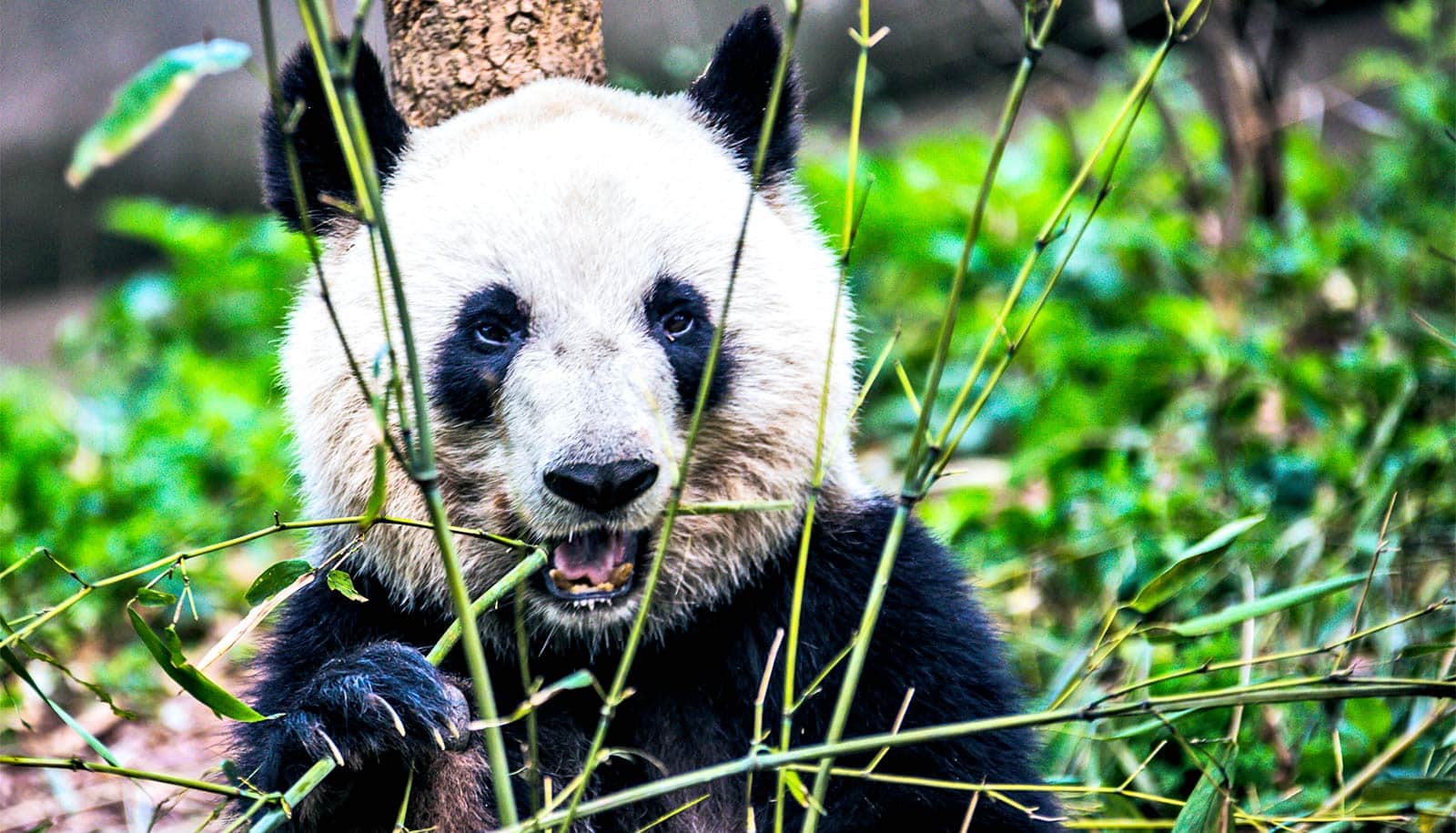Giant pandas in the wild are more fragmented and isolated than they were 30 years ago and many continue to face a high risk of extinction despite recent gains in their overall numbers, a new study finds.
Climate change, habitat loss, and reduced breeding viability—an inherent risk in small, remote populations where potential mates are few—could pose a triple whammy for these animals, the research suggests.
Scientists need to find ways to restore connectivity between these populations or introduce new breeding animals into them, the study’s authors say.
“Our models show that populations with fewer than 30 individuals have, under a best-case scenario, a one in five chance of going extinct in 100 years on average. Some may not be that lucky,” says Stuart Pimm, professor of conservation ecology at Duke University’s Nicholas School of the Environment, who helped design the new study.
Brighter long-term prospects for giant pandas?
As climate change intensifies in coming years, pandas will be driven higher and deeper into China’s mountains in search of their dietary staple, bamboo, and their populations will become even more fragmented and vulnerable to extinction, the models predict.
This vulnerability will be heightened by the synchronistic mass flowering, and subsequent mass deaths, of bamboos across large parts of the pandas’ range—an episodic event that, historically, occurs every 65 to 120 years. The next flowering in China is due to occur in the coming decade or two, Pimm says.
Demographic accidents, such as the premature deaths of breeding-age females or imbalances in the number of male and female offspring born over a period of years, can also speed an isolated population’s demise. So can inbreeding, which reduces fitness.
To assess the combined effects of these factors on animals in each of the 33 giant panda populations identified in the Fourth Giant Panda Census in 2015, scientists modeled each animal’s fate from birth to death under dozens of different scenarios.
“Doing individual-based models is quite time- and labor-intensive but provides a wealth of raw data about the likely fate of these populations, at a granular level that wouldn’t be possible by modeling at a broader scale,” Pimm says.
The study comes at a time when giant pandas’ long-term prospects seem to be brightening. Conservation by the Chinese government has helped the species’ wild population rebound in recent decades by an estimated 17%, to around 1,850 individual animals. In recognition of these gains, the IUCN Red List upgraded the pandas’ status from “endangered” to “vulnerable to extinction” five years ago, and earlier this month, the Chinese government followed suit.
Protected corridors can help
The creation of the new Giant Panda National Park that China is developing will further boost some pandas’ odds of survival, Pimm says. When completed, the park will connect 67 existing giant panda reserves in Sichuan, Gansu, and Shaanxi provinces and make it easier for animals there to crossbreed.
Animals outside the park won’t be as lucky.
“There will still be many lonely pandas who can’t find a date,” Pimm predicts. “An estimated 59 pandas, or about 3% of the total population, live in 14 geographically isolated populations outside the park’s future boundaries.
“There are also four populations with 41 individuals inside the national park that are isolated from other populations by roads and natural barriers. These are the populations our models show as being the most vulnerable to extinction without timely intervention.”
While the number of these unlucky outliers may seem small, with a total species population that’s still shy of 2,000, “any losses are worrisome losses,” Pimm says.
To prevent declines, corridors of protected land should be created—or restored, in some cases—to connect the isolated populations to each other and the new park, the study’s authors argue.
Failing that, new breeding stock should be introduced. One possible way to do this is to train pandas that have been bred and raised in captivity to forage for their own bamboo and then release them into the wild near isolated populations.
“This isn’t the easiest thing in the world. Some are going to starve to death, and no one wants that,” Pimm says. “But we have to start trying to rescue these isolated populations while there is still time.”
The research appears in Nature Ecology & Evolution. Additional coauthors of the study are from the State Key Laboratory of Urban and Regional Ecology at the Chinese Academy of Sciences’ Research Center for Eco-Environmental Sciences in Beijing.
The Second Tibetan Plateau Scientific Expedition and Research Program, the National Natural Science Foundation of China, and the Chinese Academy of Sciences’ Strategic Priority Research Program funded the work.
Source: Duke University


